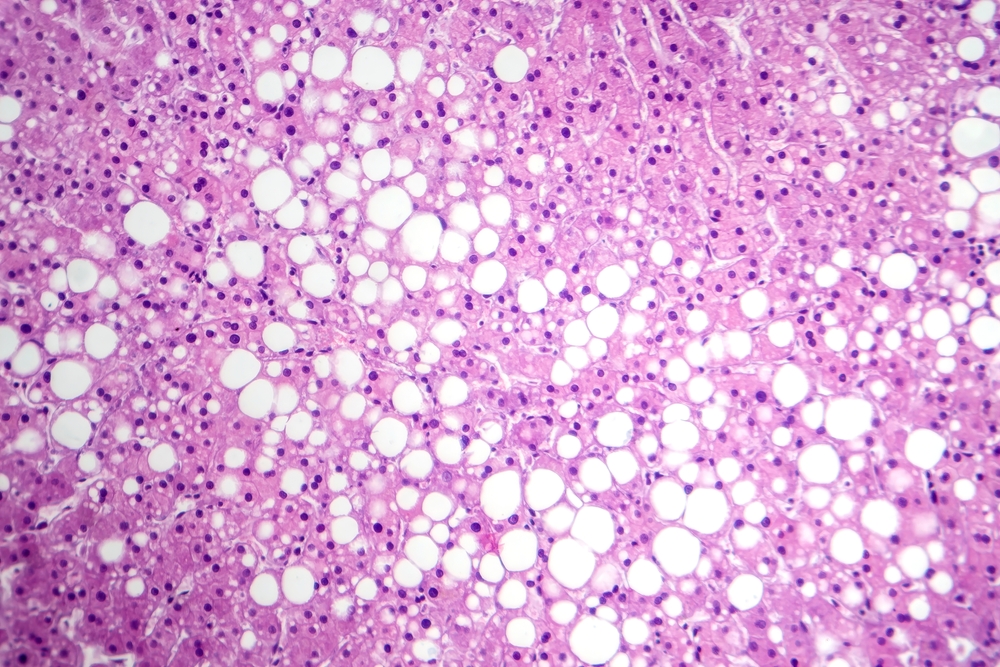This is the sixth blog in a new series discussing pathologies that can be found in seniors. The sixth blog will focus on steatosis.
Steatosis is characterized by the accumulation of lipids within hepatocytes (liver cells). It can be classified as either macrovesicular or microvesicular.
In large droplet macrovesicular steatosis, large lipid droplets occupy the cytoplasm of hepatocytes and displace the nucleus to the periphery of the cell. Meanwhile, multiple small lipid droplets of variable size occupy the cytoplasm and the nucleus maintains its central location in small droplet macrovesicular steatosis.
Causes of macrovesicular steatosis include excessive alcohol consumption, obesity, diabetes mellitus, chronic hepatitis C (especially genotype-3), starvation/malnutrition, and metabolic disorders.
Macrovesicular can be graded as normal, mild (grade 1), moderate (grade 2), or severe (grade 3). In normal macrovesicular, there is less than 5% fat deposition in hepatocytes. In mild macrovesicular, there is greater than 5% but less than 33% fat deposition in hepatocytes. Meanwhile, in moderate macrovesicular, there is between 33% and 66% fat deposition in hepatocytes. Finally, in severe macrovesicular steatosis, there is greater than 66% fat deposition in hepatocytes.
In microvesicular steatosis, many tiny, relatively uniform lipid vacuoles form and result in a bubbly appearance of hepatocytes.
Acute fatty liver of pregnancy and alcoholic foamy degeneration are some of the most common causes of microvesicular steatosis.
The Boom Health app allows users to book registered nurses, personal support workers, and personal care services, schedule transportation, order prepared meals, rent or purchase medical equipment, and get emergency assistance. Download the app from the App Store or Google Play Store.
This article is not intended to be a substitute for professional medical advice or diagnosis. Always seek the advice of your physician or another qualified health provider with any questions you may have regarding a medical condition.





